
![]()
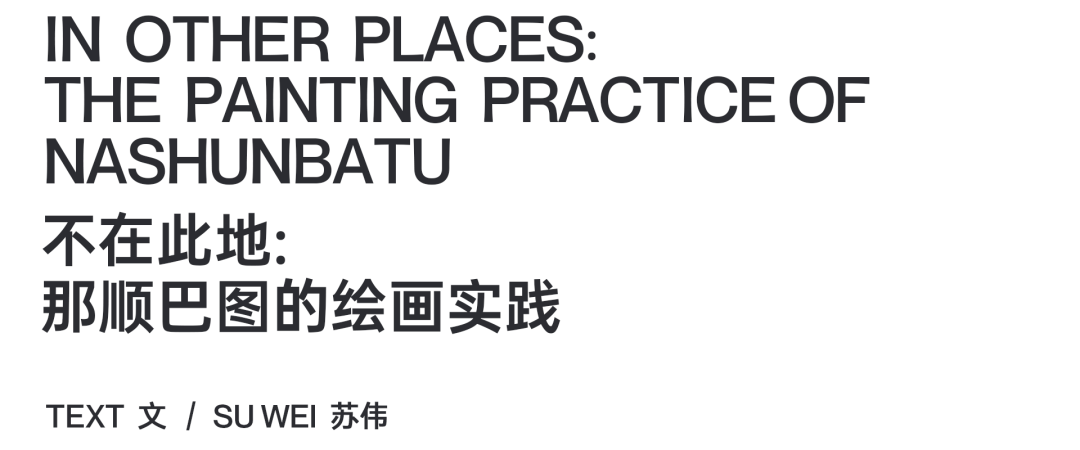
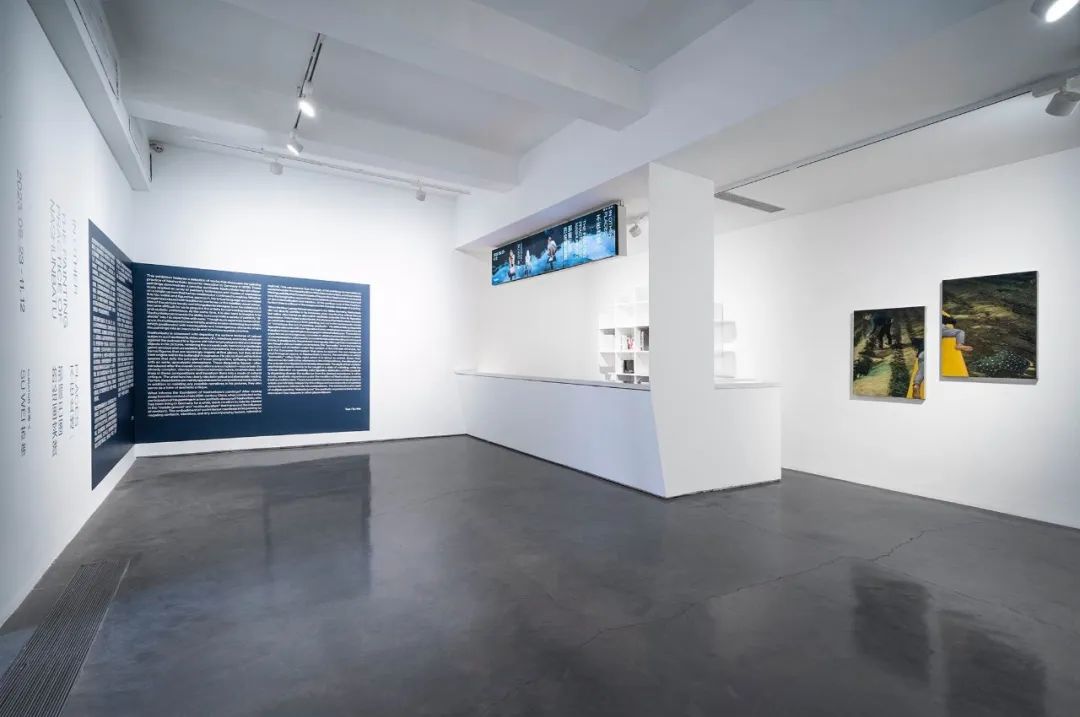
「不在此地:那顺巴图的绘画实践」展览现场
凯旋画廊,中国,2023
Installation View of
In Other Places: The Painting Practice of Nashunbatu
TRIUMPH GALLERY, China, 2023
《不在此地:那顺巴图的绘画实践》节选了那顺巴图2000年迁居德国后的绘画实践片段。这些绘画呈现出一种奇异的综合:那顺巴图将自己所掌握的、以及不断开拓出的各种绘画技巧和表达方式,往往同时运用到一张画布上;无论是写实的、具象的技术,还是带有传统意味的抒情性语言和具有超现实感的图像,又或者是来自儿时的图画阅读经验和中国蒙古地区自然景观带来的不可磨灭的记忆,我们很难就此判断,艺术家的训练背景和风格倾向。同时,很难想象的是,那顺巴图能将多种绘画的方言融入到自身的谱系之中,这一谱系并不具备整体性,而那种多地层的、往往充满不兼容的异质元素之间张力的特质,使得他的绘画变成一种无法通读和通约的实践。
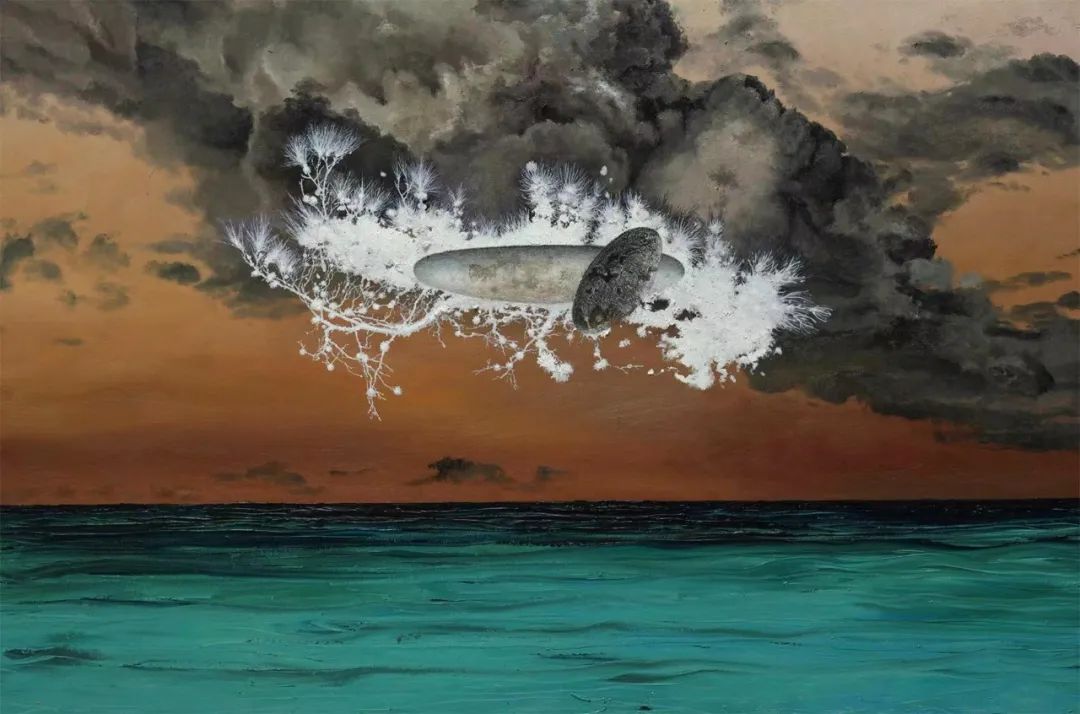
那顺巴图 Nashunbatu,无题 Untitled
布面油彩 Oil on canvas,100×150cm,2022
私人收藏借展 Private Collection
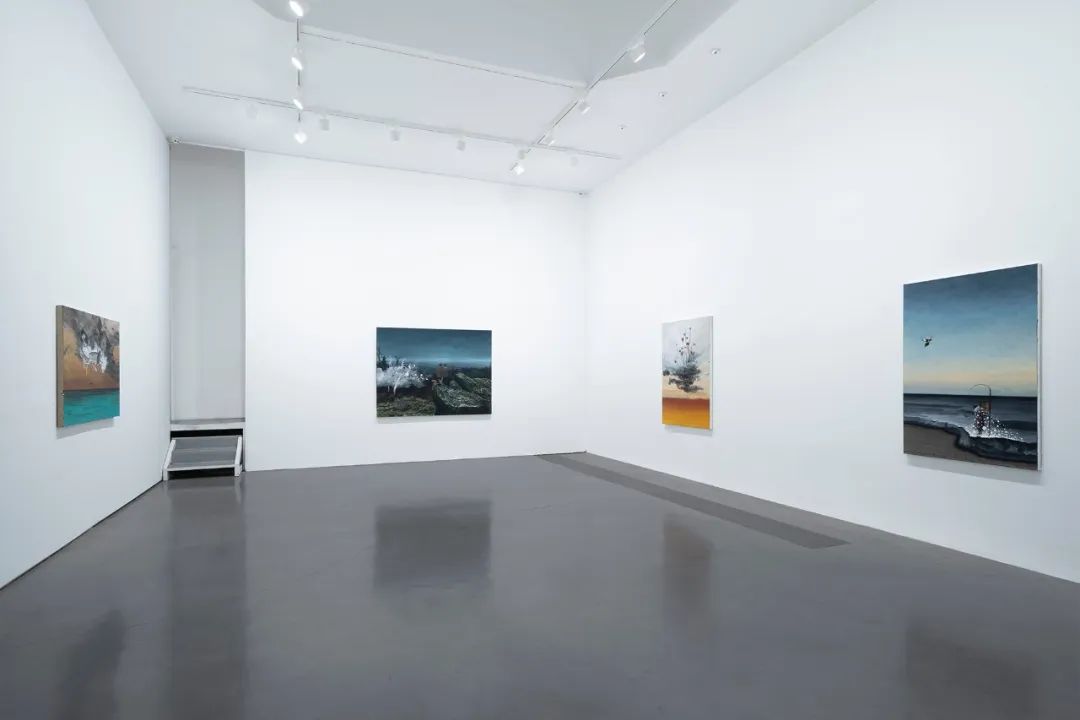
「不在此地:那顺巴图的绘画实践」展览现场
凯旋画廊,中国,2023
Installation View of
In Other Places: The Painting Practice of Nashunbatu
TRIUMPH GALLERY, China, 2023
那顺巴图着迷于刻画沙漠、天空、海浪、泥土、草甸、岩石等等自然物体的表面质感,而这种图景往往和画面中那些姿势别扭、面孔模糊的人或者奇异的物体产生对立,从而很难从人与自然巧妙和谐的风景画的角度去阅读;他在画面中创造一些近似自然、但完全源于自己想象的自然物象,它们与作品中有意搭建的、缺乏足够透视性的水平空间一起,使得作品中弥漫着奇异的前世或者末世的氛围;大量具有震惊效果的形象——这些形象有时候是在整体画面完成后添加进去的—往往将颜色、笔触、线条之间本就繁复而难以统一的画面,再次打破并引向某种文化批判的层面。艺术家在这里明确拒绝神秘主义和伪萨满教的意义指向,对他来说,这些画面的经营设置,除了抗拒图像的意义性,也具有一种审美批判的功能。
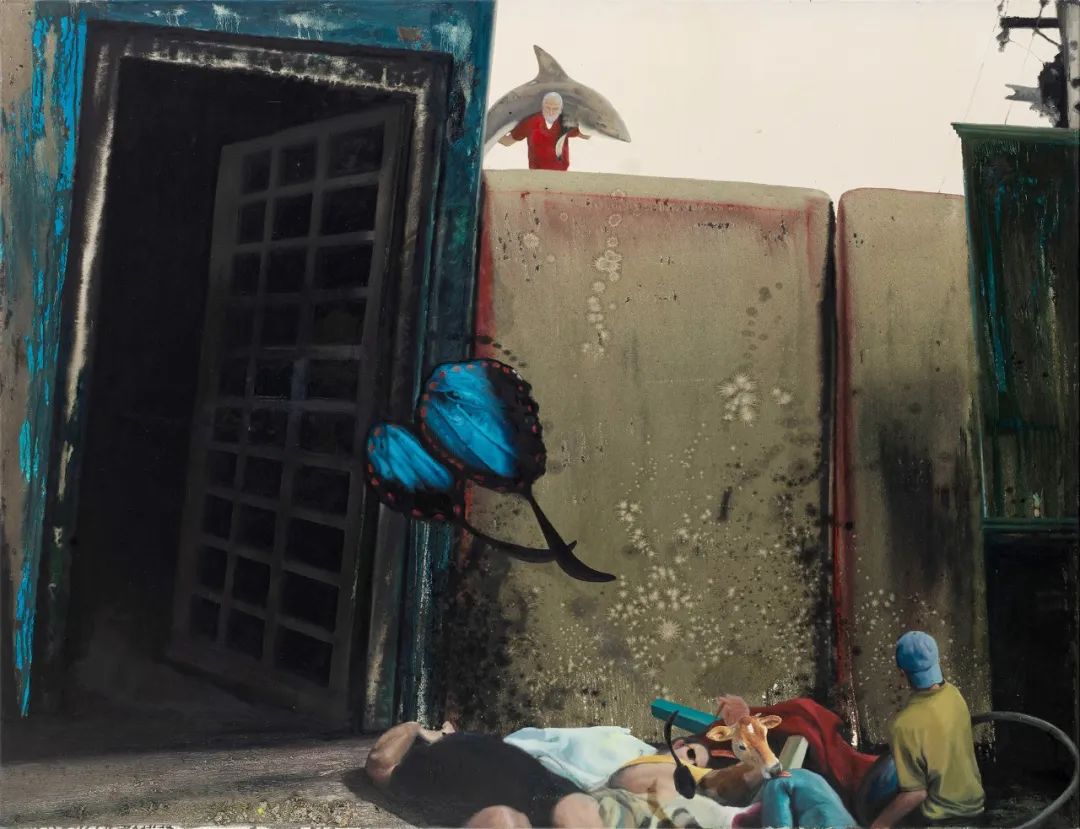
那顺巴图 Nashunbatu,无题 Untitled
布面油彩 Oil on canvas,160×210cm,2011
那顺巴图的绘画基础是什么?走出中国20世纪下半叶的语境后,是什么促成了其绘画迈向全新的审美空间?长期生活于德国的那顺巴图,毫不讳言跨越语境的“中间地带”和“多元文化”的兴趣。这种兴趣在他绘画中的体现,首先是搁置语境、身份和其附带无论是民族性还是地域性的因素。甚至可以说,他的绘画在基于语境的历史主义图谱下难以成立,而恰恰这一不成立,成为了他绘画的前提。那顺巴图对画面中的想象空间的经营,更多出自于一种去语境的、其所追求的赤裸状态下的直觉,并在这种自由所带来的艰险的代价下,展开对于图像和一元的绘画语言的批判。
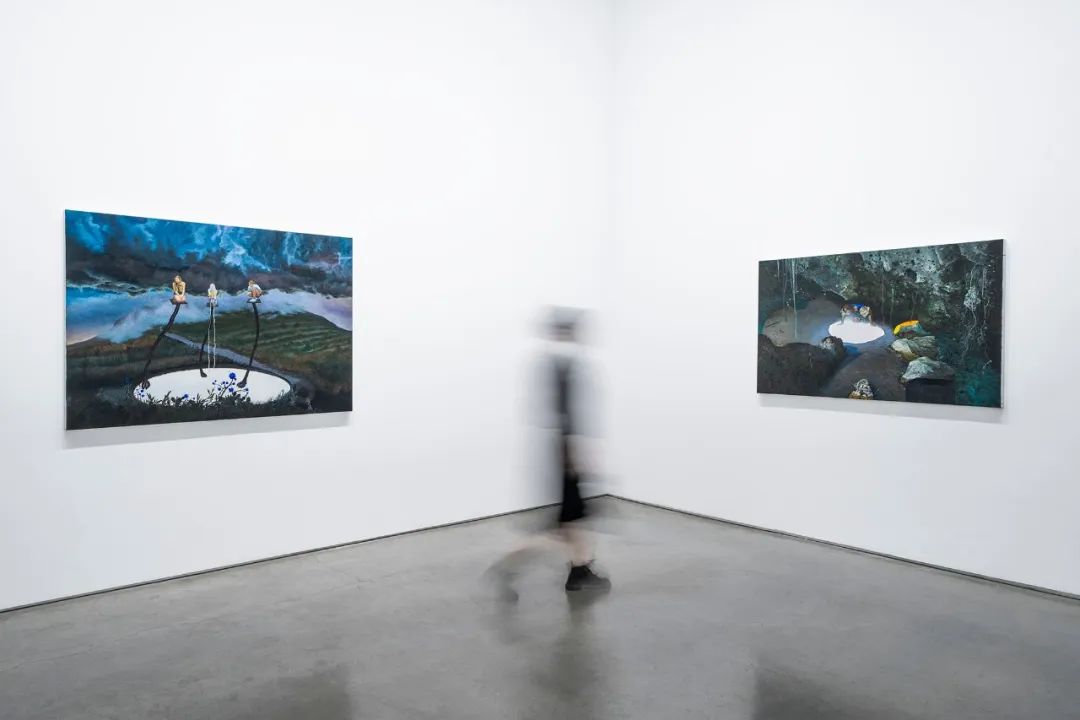
不在此地:那顺巴图的绘画实践」展览现场
凯旋画廊,中国,2023
Installation View of
In Other Places: The Painting Practice of Nashunbatu
TRIUMPH GALLERY, China, 2023
当新莱比锡画派在20世纪90年代的德国再度兴起时,那顺巴图并没有直接摄取其巨大甚至是泛滥的批判指向,而是从其具象的表达中发现了新的审美潜能。今天来看,那顺巴图显然对绘画的审美体验有所期待,但这一期待并非是“意识-绘画行为-审美”的阐释学意义上的。他在画面中将具象的部分和没有物象表达的部分并置起来,用多种方法让两者进行不同程度的对话,观者经验到的是一个不连续的、由具体到抽象的画面空间,这个过程中,预想的、由惯常的色彩和形式感觉塑造的经验,完全被不连续性打破。同时,画面中尽管充满着超现实感,但这一“超现实”既不是中国语境中那种从现实主义中跳跃而出的“超现实”,也不同于探究非时间性的心理空间的西方超现实主义。在那顺巴图的画面中,“超现实”所倚仗的叙事往往是在展开之时就停止的,画面中的无论动物或人物,由于缺乏足够的与画面中其他元素的联系,其孤立的状态显而易见;深度的精神或心理空间并未完全开启,而画面中关于空间深度、色彩、具象与抽象以及绘画的实践性的批判性思考,也将观者带离了所期待的体验。必须说,审美体验在那顺巴图这里呈现出复杂的多重面向:图像及其引发的精神和心理空间,被他在画面中所灌注的对于绘画惯例的批判和再构无限延滞;多种绘画方言的引入和冲突,让审美体验在此变成了一个永恒的不在此地的行为。
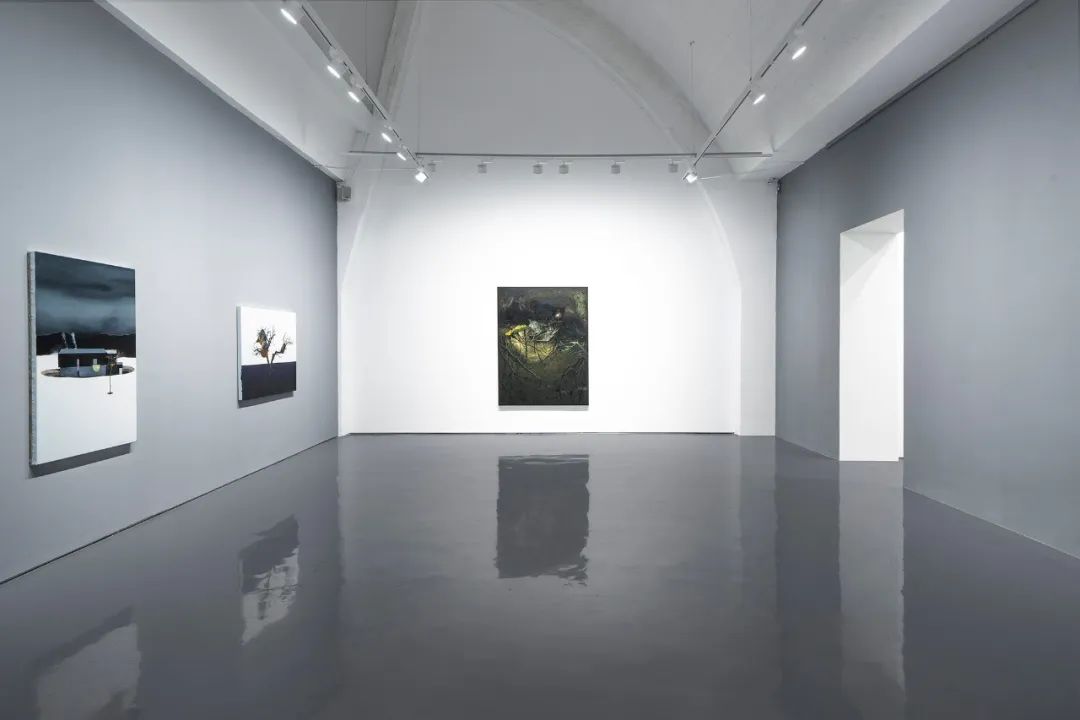
「不在此地:那顺巴图的绘画实践」展览现场
凯旋画廊,中国,2023
Installation View of
In Other Places: The Painting Practice of Nashunbatu
TRIUMPH GALLERY, China, 2023
The exhibition, In Other Places: The Painting Practice of Nashunbatu, features a selection of works that showcase the painting practice of Nashunbatu since his relocation to Germany in 2000. These paintings demonstrate a peculiar synthesis: Nashunbatu has simultaneously applied an array of painterly techniques and modes of expression on a single canvas that he has mastered or continued to explore. Whether it is his realist and figurative approach, his lyrical language and surrealist imageries imbued with traditional overtones or the indelible visual memories of the picture books and Mongolian landscapes from his childhood, it became difficult for us to pinpoint the artist’s formal training background and stylistic preference. At the same time, it is also hard to imagine how Nashunbatu commands the ability to incorporate a variety of painterly “dialects” into his repertoire with ease. Though such repertoire lacks coherence, its multilayered characteristic and the tension stemming from within, which proliferated with incompatible and heterogenous elements, shape his paintings into an inscrutable and incommensurable practice.
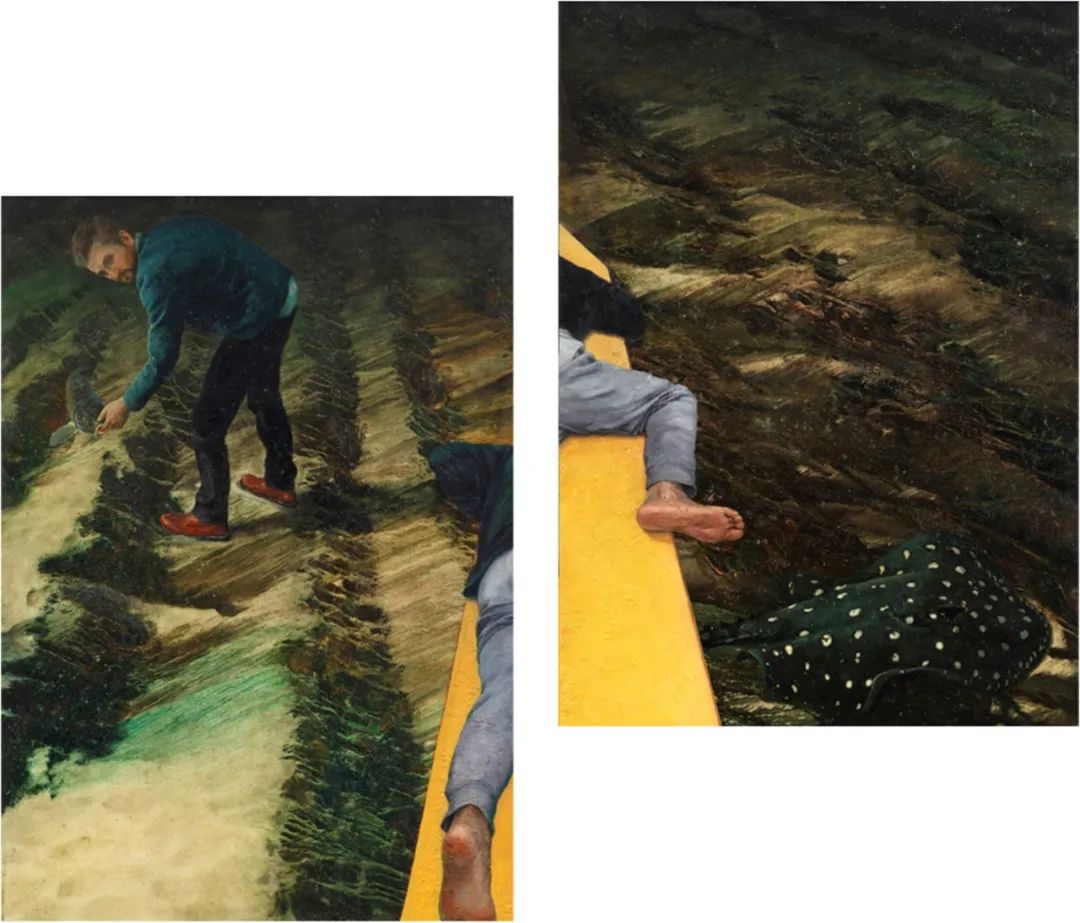
那顺巴图 Nashunbatu,无题 Untitled
布面油彩 Oil on canvas,100×70cm ×2,2010
Nashunbatu is obsessed with depicting the surface textures of natural subjects such as deserts, skies, waves, dirt, meadows, and rocks, which pin against the awkward tiny figures with blurred physiognomies and strange objects in his pictures, rendering the conventionally harmonious landscape genre anxious and unreadable. In his compositions, he would often invent forms/figures that are seemingly organic at first glance, but they all find their origins within his outlandish imagination. He places them within fictive spaces that defy the principle of linear perspective, suffusing his works with an eerie, apocalyptic atmosphere. These disquieting figures—often introduced after the overall compositions are completed—exacerbate the already complex, discrepant balance between colors, brushstrokes, and lines in these compositions and transform them into a mode of cultural critique. The artist here has clearly rejected mystical and shamanistic reading. For him, these forms are merely apparatuses for compositional manipulation ; in addition to resisting any possible narratives in his pictures, they also serve as a form of aesthetic critique.
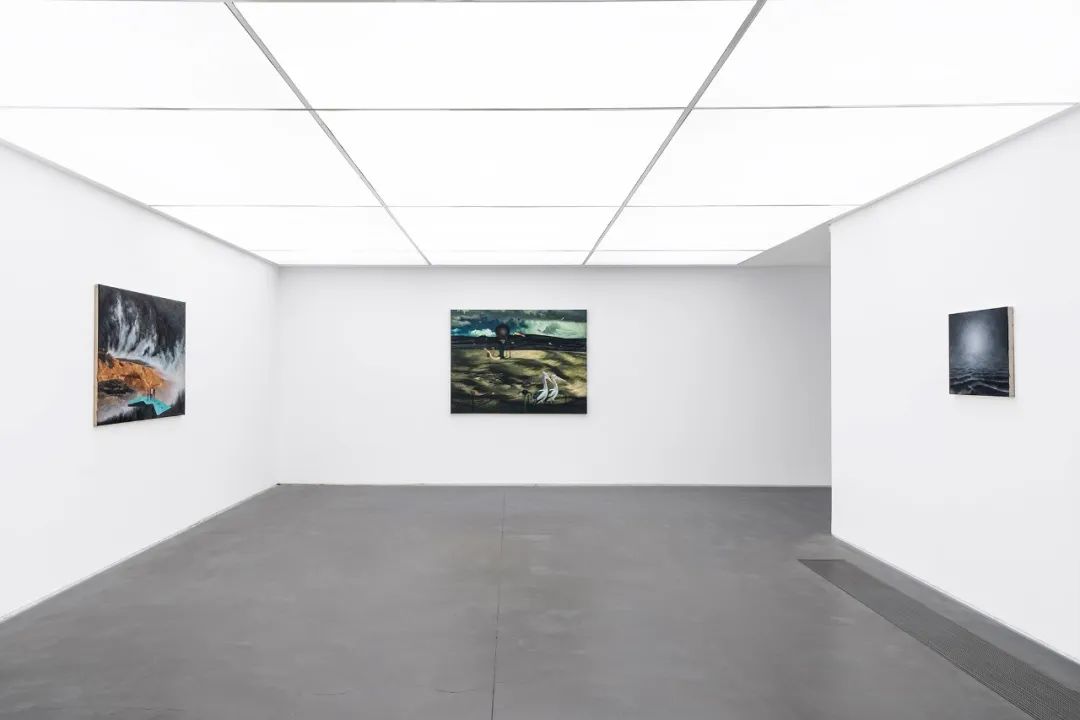
「不在此地:那顺巴图的绘画实践」展览现场
凯旋画廊,中国,2023
Installation View of
In Other Places: The Painting Practice of Nashunbatu
TRIUMPH GALLERY, China, 2023
What informs the foundation of Nashunbatu’s paintings? After moving away from the context of late 20th-century China, what contributed to the participation of his paintings in a new aesthetic discourse? Nashunbatu, who has been living in Germany for a while, made no effort to hide his interest in the “middle ground” and “multiculturalism” that transcend the influence of contexts. The embodiment of such interest manifests in his painting by negating contexts, identities, and any accompanying factors, national or regional. One can assume that the logic of his paintings is impossible to establish under the visual tradition of the historical context, and it is precisely this impossibility that forms the basis of his practice. Nashunbatu’s command over the imaginative space in his compositions comes more from a pursuit of decontextualization and intuition. At the perilous cost of this freedom, he launches a critique of the image and the monistic language of painting.
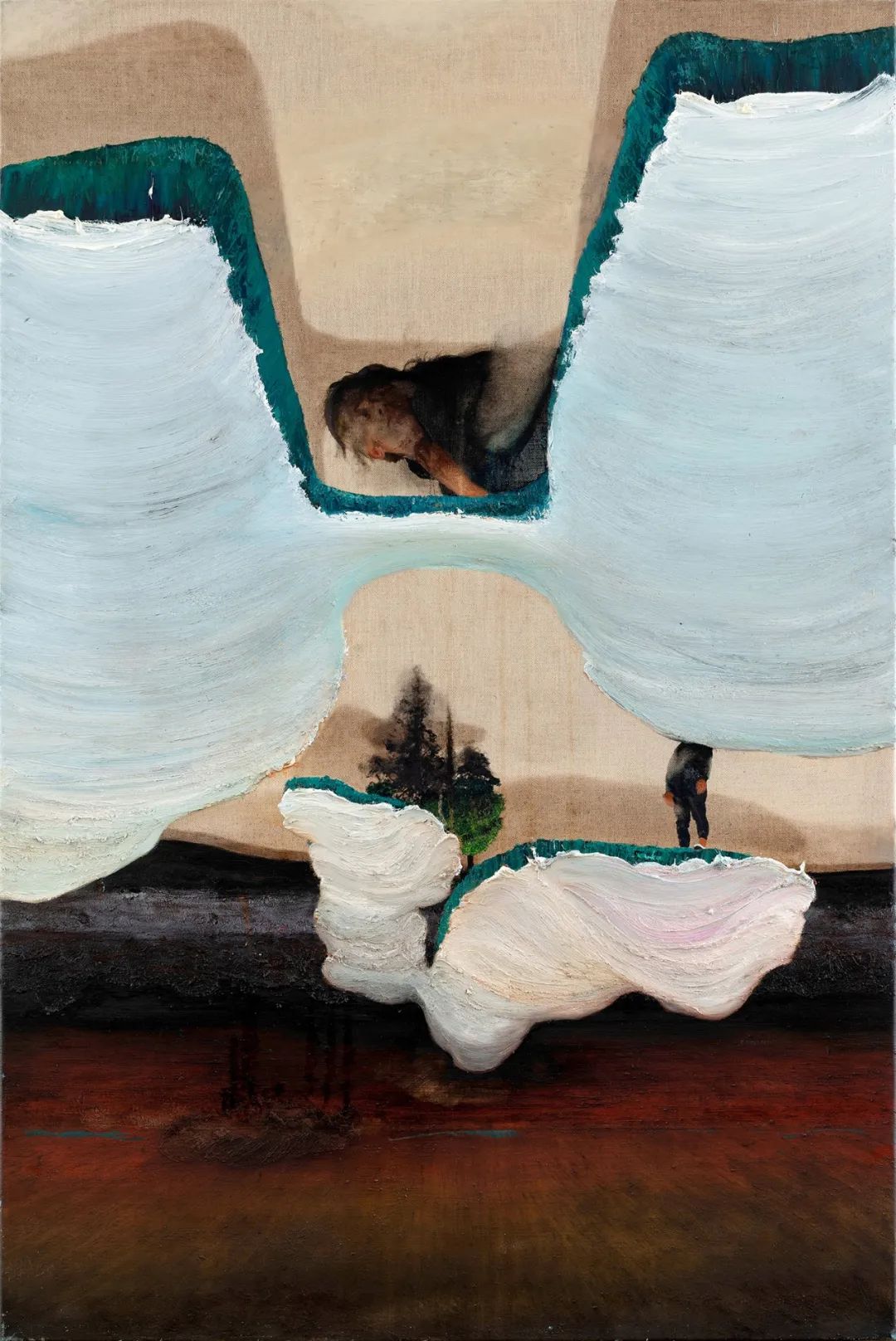
那顺巴图 Nashunbatu,无题 Untitled
布面油彩 Oil on canvas,150×100cm,2021
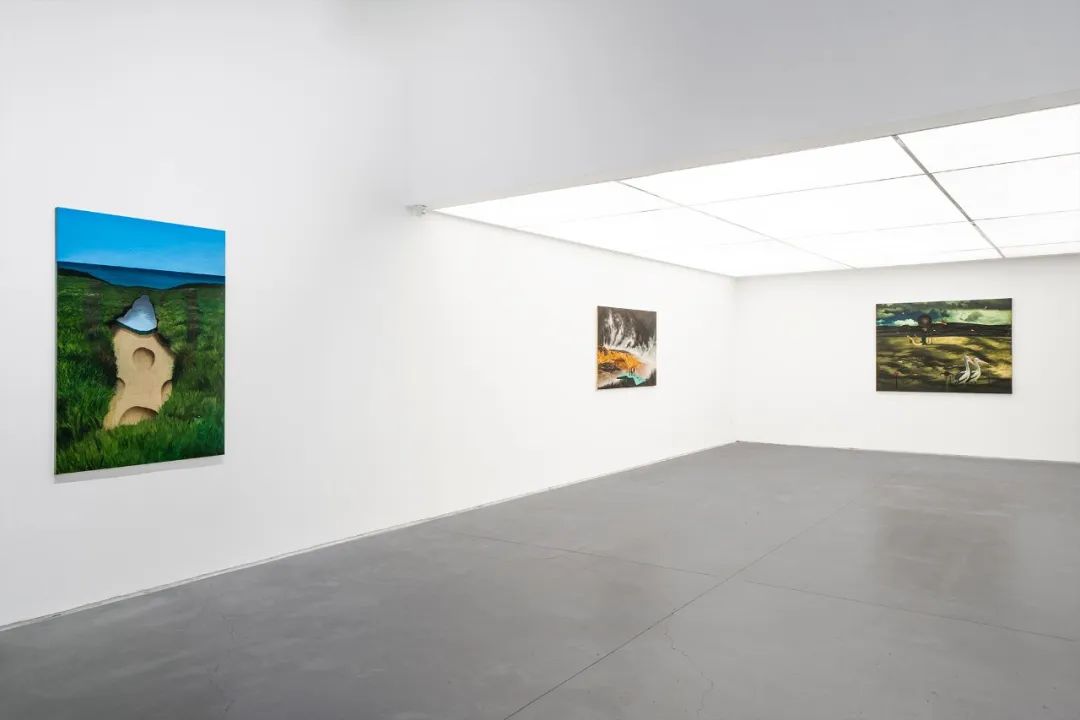
「不在此地:那顺巴图的绘画实践」展览现场
凯旋画廊,中国,2023
Installation Views of
In Other Places: The Painting Practice of Nashunbatu
TRIUMPH GALLERY, China, 2023
When the New Leipzig School reemerged in the 1990s Germany, Nashunbatu did not directly partake in its immense, even overflowing critical stance but rather discovered an alternative aesthetic potential from its figurative expression. From today’s standpoint, it is obvious that Nashunbatu expects an aesthetic experience from painting, but not in the hermeneutic sense of “conscious-the act of painting-aesthetic.” He deliberately juxtaposes figurative elements with non-figurative forms, employing several techniques that allow these opposing two to engage in different dialogues. The audience experiences an incongruous, concrete-to-abstract pictorial space in which one’s expectation, informed by a conventional understanding of colors and forms, is shattered by the pictures’ incongruity. Although his compositions are fraught with surrealist uncanniness, this “surreality” is not the kind that was born out of realism under the context of the Chinese art scene, nor is it the European Surrealism that aims to explore the non-temporal psychological space. In Nashunbatu’s works, the narrative on which “surreality” relies halts right when it is about to unfold. Given their disconnection with other elements in the compositions, the alienation of the animals and figures becomes fairly discernable. The depth of their mental or psychological space seems to be caught in a state of unfolding, while the critical reflection on spatiality, color, figuration, abstraction, and the practicality of painting diverge the audience from the desired experience. In other words, aesthetic experience under the rendition of Nashunbatu presents itself as multifaceted. The picture and the mental and psychological space it entails are infinitely delayed by the critique and reconstruction of painting conventions he imbues into his compositions. The introduction and clash of multiple painting “dialects turns” the aesthetic experience here into an eternal act that happens in other places/absent.
©文章版权归属原创作者,如有侵权请后台联系删除
